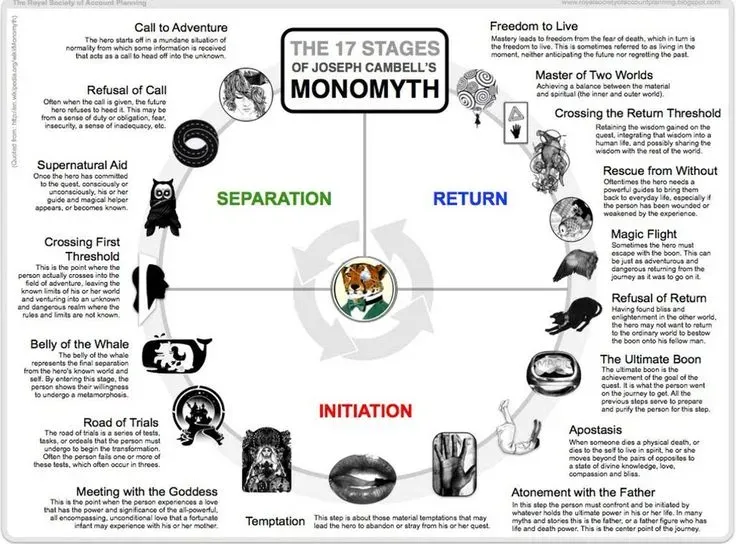One Book, One Idea: The Razor's Edge by Somerset Maugham

The Hero with One Thousand Faces is a fundamental work by Joseph Campbell that elucidates the age-old Monomyth of the ‘Hero’s Journey’. We’ll explore today how this is encapsulated in the 1944 novel by one of England’s greatest literary men, Somerset Maugham.
In brief, the novel traces the events of an American named Larry Darrell and his hero’s journey through the perspective of the author himself. It is a fascinating portrait of the interregnum period of Europe & American society as well as the encapsulation of the alienation of the average man from material life due to the horrors of war.
Larry is an affable, ordinary young man who goes off as a pilot in world war 1. He survives the war but is inexorably changed after witnessing one his best friend, a fellow pilot, die from a wound. Larry's friend was always exceedingly happy hitherto and right up until the moment of his death.
This is the moment that, in Joseph Campbell’s diagrammatic conception, is the ‘descent’ of the hero into the underworld. All orientation from his previous life is no longer useful. The very foundations of Larry’s reality are destroyed, he now must rebuild totally anew for himself what life is going to be about.
Upon his return home Larry is pressured by his fiancé, his best friend and his social milieu to join in with the rest of the country and get on with living prosperously. He is offered a job in a financial firm with his best friend and the hand of the most beautiful girl of his station in life. Yet he refuses.
This is the stage of temptation, where the hero is offered the life that once would have been the completion of his wildest dreams, yet to prove himself metal enough to fully answer his deepest question, to seek ‘the holy grail’ of his life, he must ultimately reject this path and continue his original journey for solace.
Larry does this, though for over a year he straddles two worlds – living the life of a amateur student in Paris while also maintaining the engagement with his sweetheart. Ultimately, they call it quits – his fiancé marries his best friend in order to take up a life of glamorous life of sociality while Larry plunges into his true adventure.
Over the years he is a student in Paris, a mechanic in a coal mine, a monk, a vagabonding farmhand, a deckhand on a cruise ship, a lover of a female painter and a wanderings disciple of Indian gurus.
Ultimately, he finds his salvation in Advaita Vedanta, a rigorous Indian philosophy centered on the practice of transcending Good & Evil and leaving behind the bondages of the self. Larry proceeds to return to Europe, then eventually America, living a humble life and writing a book on his experiences. As the author ends the book with, it is a success story.
The book is a wonderful case study of the monomyth of the Hero’s Journey proper in a modern context. Although the age-old terra firma of the journey itself is the same as any other myth, the modern man’s plight of fleeing the depersonalizing industrial war machine & economy of the West in favor of the chilly, crystal, blindingly brilliant clarity of the East is a story that is definitive of this era. This story encapsulates much of the broader reactionary cultural developments following the two world wars that seemed to have killed off the possibility for Western spirituality to carry water any longer for a great many of the western societies inhabitants and their turning towards the east for spiritual succor.